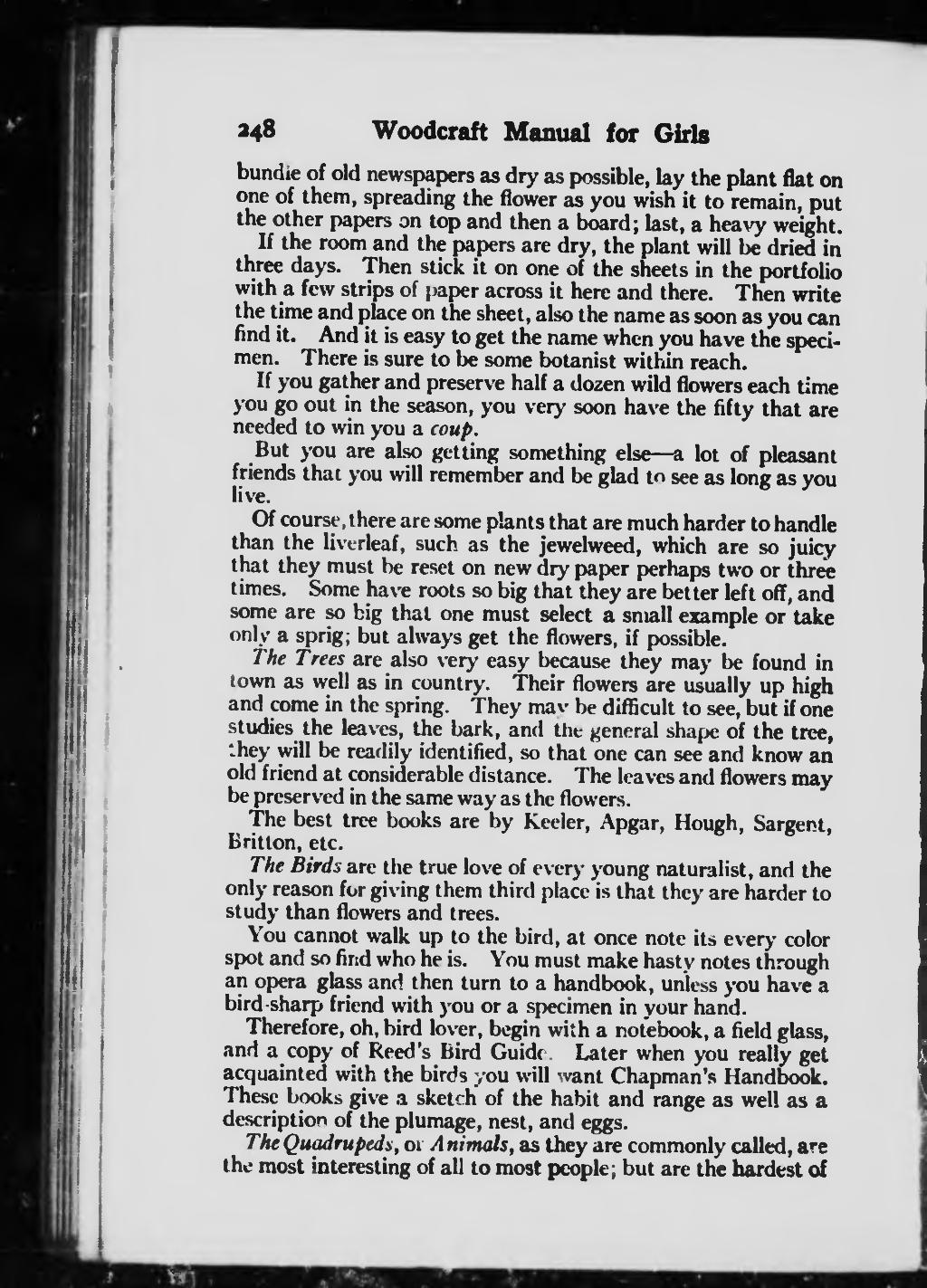348 Woodcraft Manual for Girls bundle of old newspapers as dry as possible, lay the plant flat on one of them, spreading the flower as you wish it to remain, put the other papers on top and then a board; last, a heavy weight. If the room and the papers are dry, the plant will be dried in three days. Then stick it on one of the sheets in the pcMtfolio with a few strips of i)aper across it here and there. Then write the time and place on the sheet, also the name as soon as you can find it. And it is easy to get the name when you have the speci- men. There is sure to be some botanist within reach. If you gather and preserve half a dozen wild flowers each time you go out in the season, you very soon have the fifty that are needed to win you a coup. But yovL are also getting something else — a lot of pleasant friends that you will remember and be glad to see as k)ng as you live. Of course, there are some plants that are much harder to handle than the liverleaf, such as the jewelweed, which are so juicy that they must be reset on new dry paper perhaps two or three times. Some have roots so big that they are better left off, and some are so big that one must select a small example or taJte only a sprig; but always get the flowers, if possible. The Trees are also very easy because they may be found in town as well as in country. Their flowers are usually up high and come in the spring. They may be diflScult to see, but if one studies the leaves, the bark, and the general shape of the tree, they will be readily identified, so that one can see and know an old friend at considerable distance. The leaves and flowers may be preserved in the same way as the flowers. The best tree books are by Keeler, Apgar, Hough, Sargent, Britton, etc. The Birds arc the true love of everj- young naturalist, and the only reason for giving them third place is that they are harder to study than flowers and trees. You cannot walk up to the bird, at once note its every color spot and so find who he is. You must make hasty notes through an opera glass and then turn to a handbook, unless you have a bird sharp friend with you or a specimen in your hand. Therefore, oh, bird lover, begin with a notebook, a field glass, and a copy of Reed's Bird Guide. Later when you really get acquainted with the birds you will vant Chapman's Handbook. These books give a sketch of the habit and range as as a description of the plumage, nest, and eggs. The Quadrupeda, oi A nimals, as they are commonly called, are the most interesting of all to most pe(^le; but are ttie hardest of
Stránka:roll 1916.djvu/272
Z thewoodcraft.org
Tato stránka nebyla zkontrolována
